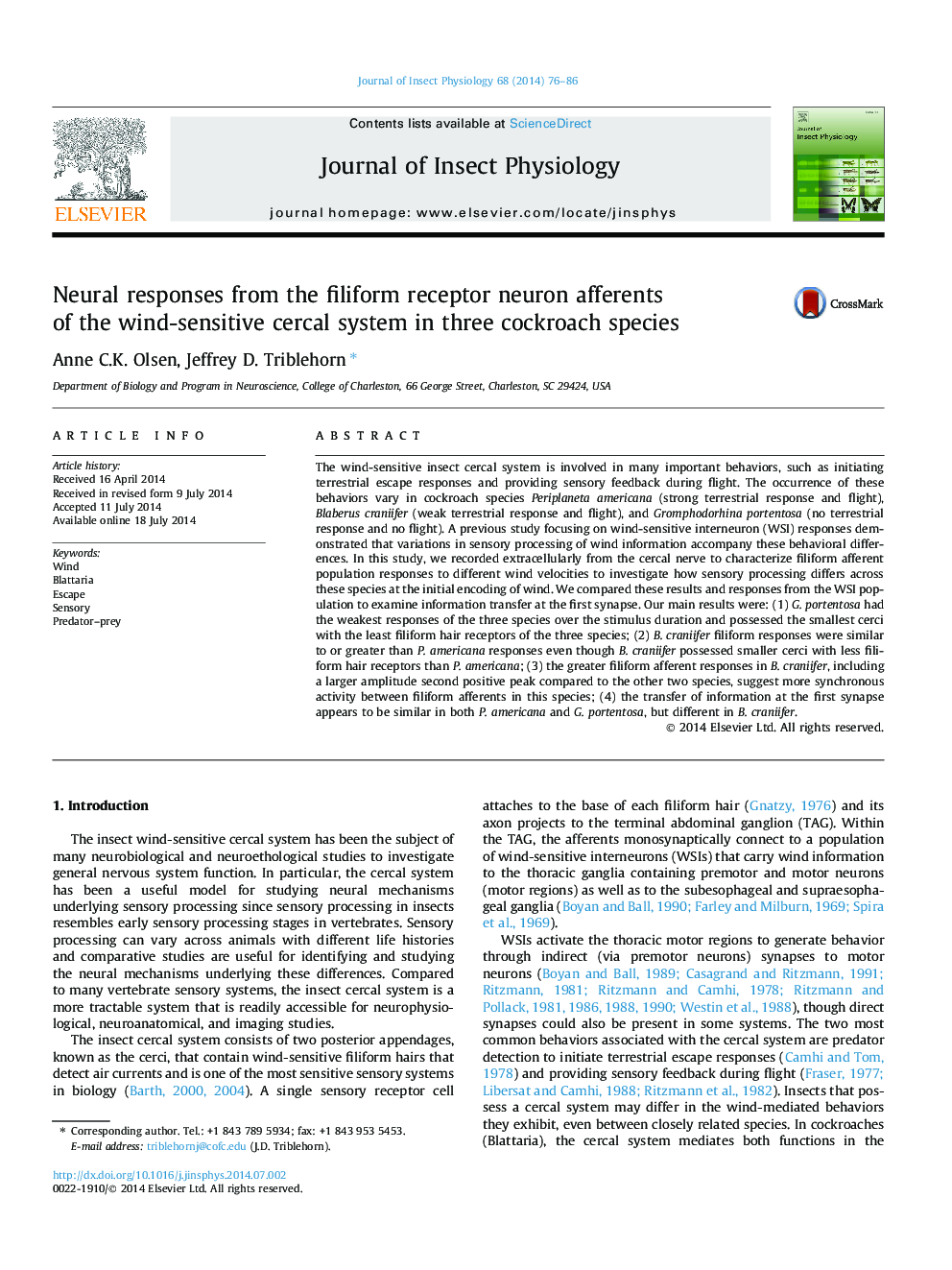| کد مقاله | کد نشریه | سال انتشار | مقاله انگلیسی | نسخه تمام متن |
|---|---|---|---|---|
| 5921602 | 1571002 | 2014 | 11 صفحه PDF | دانلود رایگان |
- Cercal system filiform afferent responses were compared in three cockroach species.
- The species differed in their wind-evoked escape responses and flight ability.
- Wind elicited the weakest responses in Gromphadorhina portentosa.
- Wind elicited stronger responses in Blaberus craniifer than Periplaneta americana.
- Sensory processing in B. craniifer may be different than in the other two species.
The wind-sensitive insect cercal system is involved in many important behaviors, such as initiating terrestrial escape responses and providing sensory feedback during flight. The occurrence of these behaviors vary in cockroach species Periplaneta americana (strong terrestrial response and flight), Blaberus craniifer (weak terrestrial response and flight), and Gromphodorhina portentosa (no terrestrial response and no flight). A previous study focusing on wind-sensitive interneuron (WSI) responses demonstrated that variations in sensory processing of wind information accompany these behavioral differences. In this study, we recorded extracellularly from the cercal nerve to characterize filiform afferent population responses to different wind velocities to investigate how sensory processing differs across these species at the initial encoding of wind. We compared these results and responses from the WSI population to examine information transfer at the first synapse. Our main results were: (1) G. portentosa had the weakest responses of the three species over the stimulus duration and possessed the smallest cerci with the least filiform hair receptors of the three species; (2) B. craniifer filiform responses were similar to or greater than P. americana responses even though B. craniifer possessed smaller cerci with less filiform hair receptors than P. americana; (3) the greater filiform afferent responses in B. craniifer, including a larger amplitude second positive peak compared to the other two species, suggest more synchronous activity between filiform afferents in this species; (4) the transfer of information at the first synapse appears to be similar in both P. americana and G. portentosa, but different in B. craniifer.
172
Journal: Journal of Insect Physiology - Volume 68, September 2014, Pages 76-86
